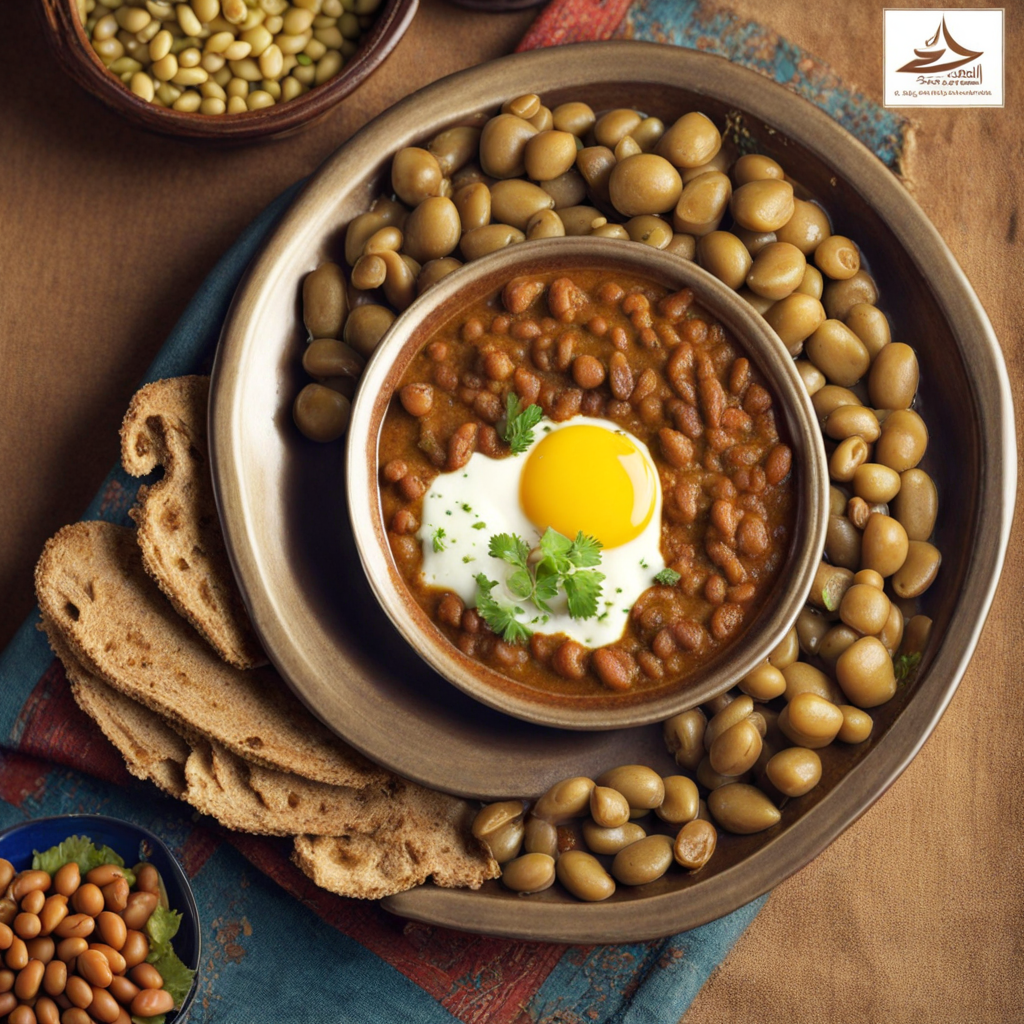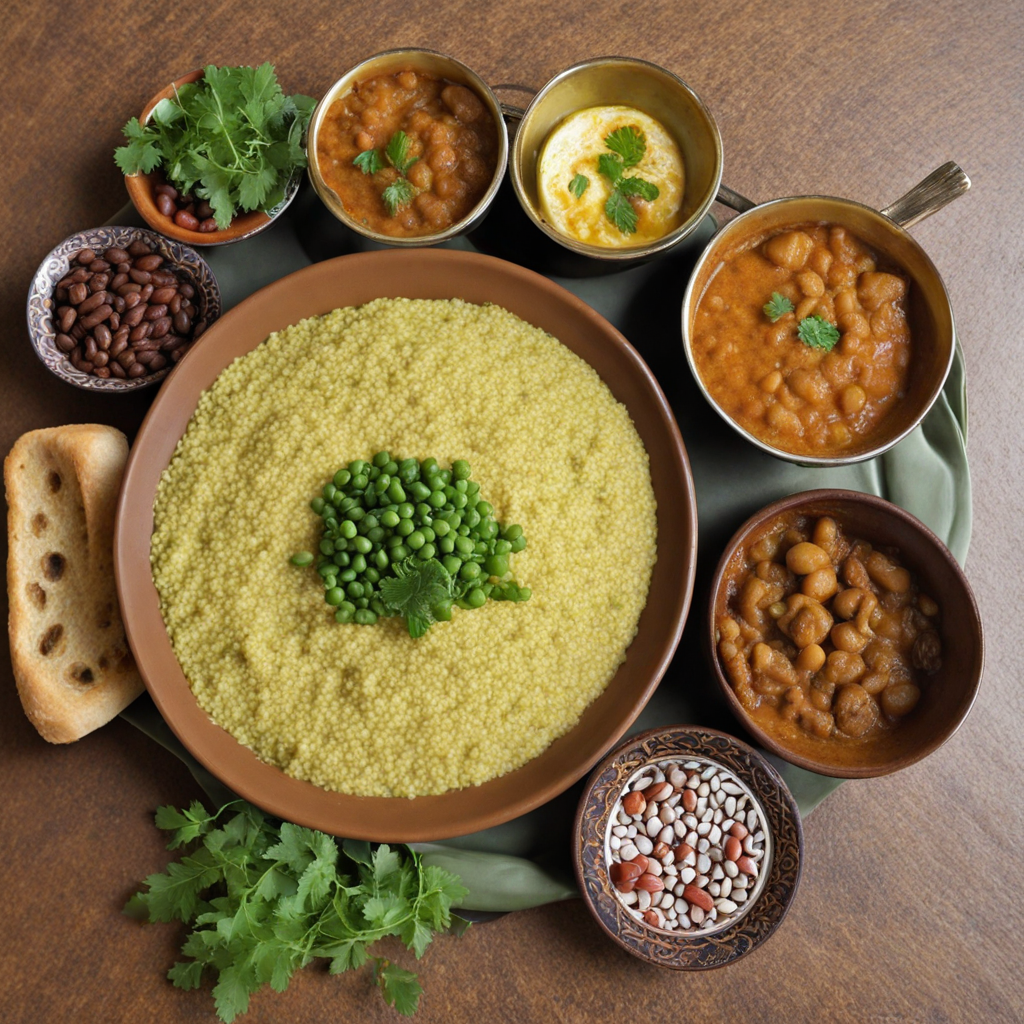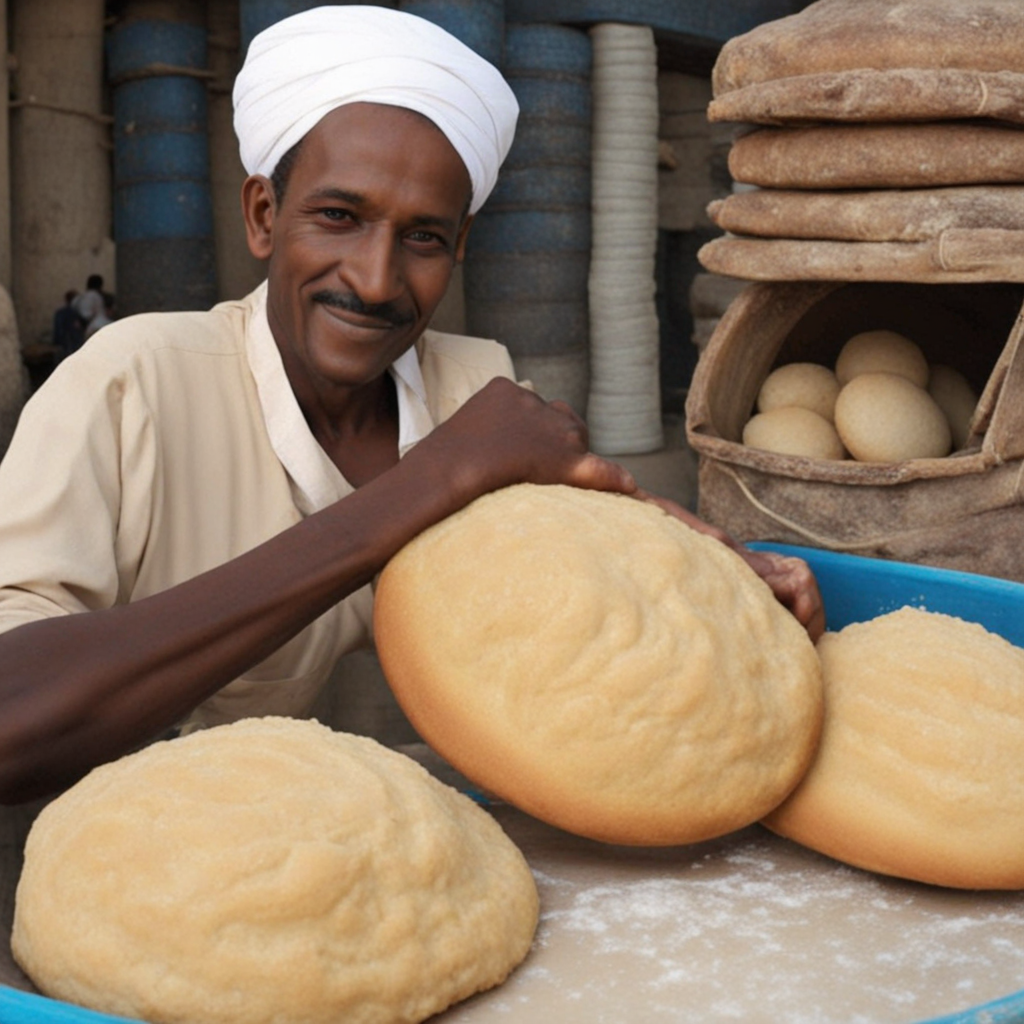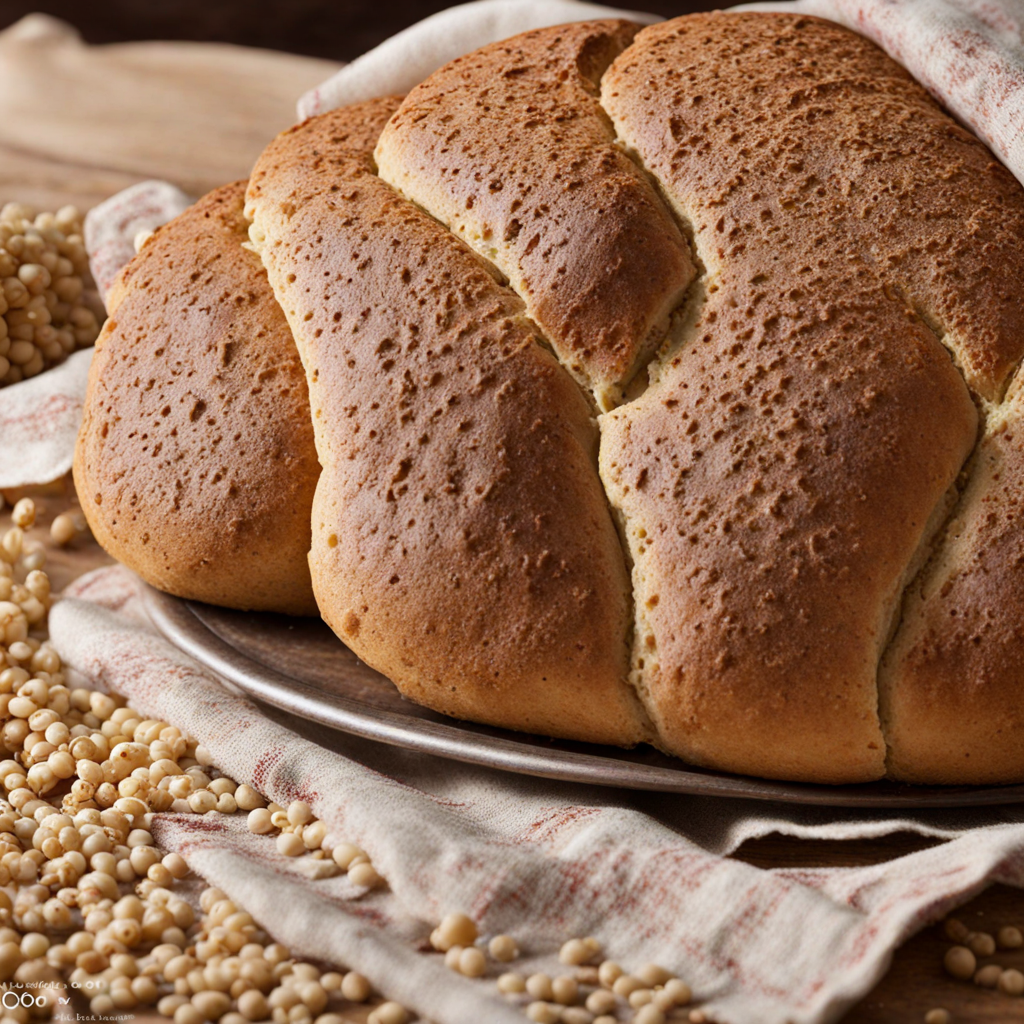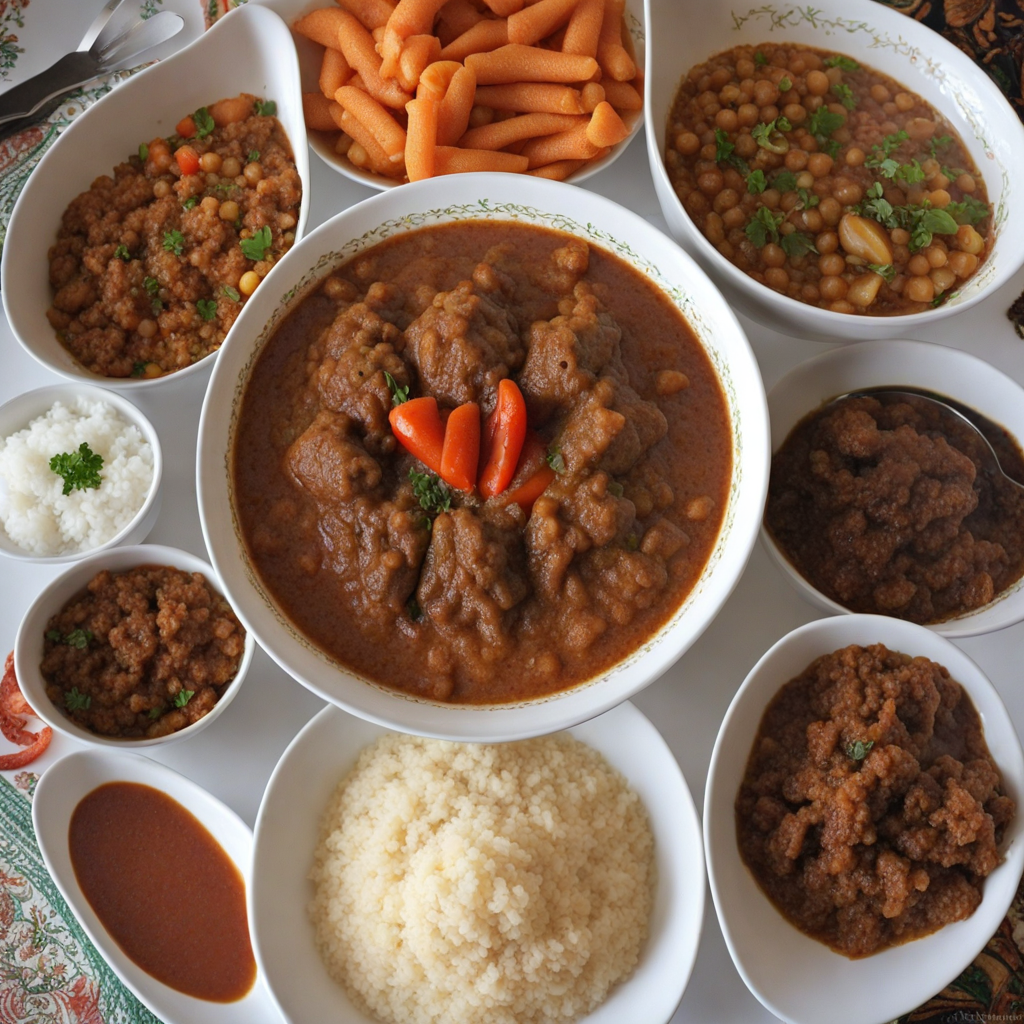Shahan ful
Shahan ful is a beloved Sudanese dish that showcases the rich culinary heritage of the country. This hearty meal primarily consists of fava beans, which are slow-cooked until they reach a creamy, velvety texture. The beans are often seasoned with a blend of spices and herbs, including garlic, cumin, and lemon juice, which elevate their natural flavors and create a delightful harmony on the palate. The dish is typically served warm, making it a comforting staple in Sudanese households, particularly during breakfast or as a satisfying snack throughout the day. One of the defining features of Shahan ful is the array of accompaniments that enhance its taste and presentation. It is commonly garnished with a drizzle of olive oil, fresh herbs like parsley or coriander, and sometimes a sprinkle of chili pepper for those who enjoy a bit of heat. Additionally, it is often served alongside warm, fluffy bread, such as 'aish' (a type of flatbread), which is perfect for scooping up the creamy beans. The combination of textures and flavors creates a delightful eating experience that is both nourishing and fulfilling. Shahan ful is not just a dish; it's a communal experience often enjoyed with family and friends. It reflects the Sudanese culture of sharing meals and celebrating togetherness. The vibrant colors of the dish, with the green herbs contrasting against the warm brown of the fava beans, make it visually appealing as well. For those looking to explore new tastes, Shahan ful offers a unique blend of simplicity and depth, inviting diners to savor the rich flavors of Sudanese cuisine and discover the warmth of its culinary traditions.
How It Became This Dish
The History of Shahaan Fool: A Culinary Treasure of Sudan #### Origins Shahaan Fool, a staple in Sudanese cuisine, is a hearty fava bean dish that holds deep cultural significance and reflects the rich agricultural traditions of the region. The term "Shahaan" translates to "dish" in Arabic, while "Fool" refers to fava beans, known scientifically as *Vicia faba*. This vibrant dish has its roots in the Nile Valley, where fava beans have been cultivated for thousands of years. Evidence suggests that they were domesticated in the region as early as 5000 B.C., making them one of the oldest cultivated crops. Fava beans are well-suited to the Sudanese climate, thriving in the rich, fertile soils of the Nile floodplain. The cultivation of these beans became a cornerstone of Sudanese agriculture, providing a reliable source of protein for the population. As a result, Shahaan Fool emerged not only as a nutritious dish but also as a symbol of sustenance and resilience in a region often characterized by its challenges, including droughts and food scarcity. #### Cultural Significance In Sudan, food is much more than mere sustenance; it is a reflection of identity, community, and tradition. Shahaan Fool is often prepared for breakfast and is seen as a unifying dish, bringing families together to share a meal. Its preparation and consumption are embedded in social rituals, fostering connections among family and friends. The dish is typically served with a variety of accompaniments, such as bread, vegetable salad, and sometimes eggs, creating a colorful and nutritious spread. The act of sharing Shahaan Fool is a gesture of hospitality, as guests are often welcomed with this traditional fare. It signifies warmth and generosity, traits deeply ingrained in Sudanese culture. Moreover, Shahaan Fool represents the intersection of various cultural influences in Sudan. The country is home to diverse ethnic groups, each contributing to the culinary landscape. The dish has absorbed influences from Arab, African, and Mediterranean cuisines, resulting in a unique flavor profile that is distinctly Sudanese. Spices such as cumin and coriander are often incorporated, reflecting the broader regional culinary practices. #### Development Over Time As Sudan navigated through periods of change, including colonial rule and modernization, Shahaan Fool adapted while remaining true to its roots. During the British colonial period in the late 19th and early 20th centuries, there was a significant shift in agricultural practices. The introduction of new farming techniques and crops altered local diets, yet fava beans continued to hold their ground as a staple food. In the post-colonial era, as Sudan experienced political upheaval and conflict, Shahaan Fool emerged as a symbol of national identity. The dish’s resilience mirrored that of the Sudanese people, who faced challenges yet maintained their culinary traditions. Street vendors began to sell Shahaan Fool in urban areas, particularly in Khartoum, making the dish accessible to a broader audience. The rise of street food culture in the late 20th century elevated Shahaan Fool beyond the home kitchen, allowing it to become a beloved fast food option. The modern era has also seen the globalization of cuisine, leading to new interpretations of traditional dishes. Chefs and home cooks alike have experimented with Shahaan Fool, infusing it with contemporary twists while honoring its heritage. Variations may include the addition of spicy sauces or the incorporation of other legumes and vegetables, appealing to diverse palates. #### Nutritional and Economic Aspects From a nutritional standpoint, Shahaan Fool is a powerhouse of health benefits. Fava beans are rich in protein, fiber, and essential vitamins, making them an ideal food for communities that may lack access to varied diets. This nutritional value has been particularly significant in rural areas, where economic constraints limit food choices. The dish’s affordability and accessibility have solidified its status as a dietary staple across different socioeconomic classes. Economically, the cultivation of fava beans supports local farmers and contributes to Sudan's agricultural economy. The demand for Shahaan Fool, both locally and among the Sudanese diaspora, has spurred interest in sustainable farming practices. Efforts to promote local ingredients and traditional methods of preparation are gaining traction, as the global market increasingly values heirloom varieties and organic produce. #### The Dish Today Today, Shahaan Fool is celebrated not only in households but also in restaurants and cafes throughout Sudan and among Sudanese communities abroad. Food festivals and cultural events often showcase this beloved dish, highlighting its role in Sudanese heritage. In recent years, there has been a resurgence of interest in traditional cooking methods, with many young chefs and home cooks seeking to preserve and promote their culinary heritage. Social media has played a pivotal role in this revival, allowing recipes and stories associated with Shahaan Fool to reach a global audience. Food blogs, Instagram accounts, and YouTube channels dedicated to Sudanese cuisine have emerged, sharing the nuances of preparing this dish and its significance within the broader context of Sudanese culture. Moreover, as the world grapples with issues of food security and sustainability, Shahaan Fool stands as a testament to the importance of local, plant-based foods. It embodies the principles of resourcefulness and adaptability that characterize Sudanese culture. The dish not only nourishes the body but also serves as a bridge connecting generations, preserving the stories and traditions of the past while embracing the future. #### Conclusion Shahaan Fool is more than just a dish; it is a narrative woven into the fabric of Sudanese identity. From its ancient origins to its current status as a cherished culinary symbol, this fava bean dish encapsulates the resilience, hospitality, and cultural richness of Sudan. As it continues to evolve and adapt, Shahaan Fool remains a delicious reminder of the deep connections between food, culture, and community. Whether shared among family or enjoyed in a bustling street market, Shahaan Fool will undoubtedly continue to delight and nourish generations to come.
You may like
Discover local flavors from Sudan


